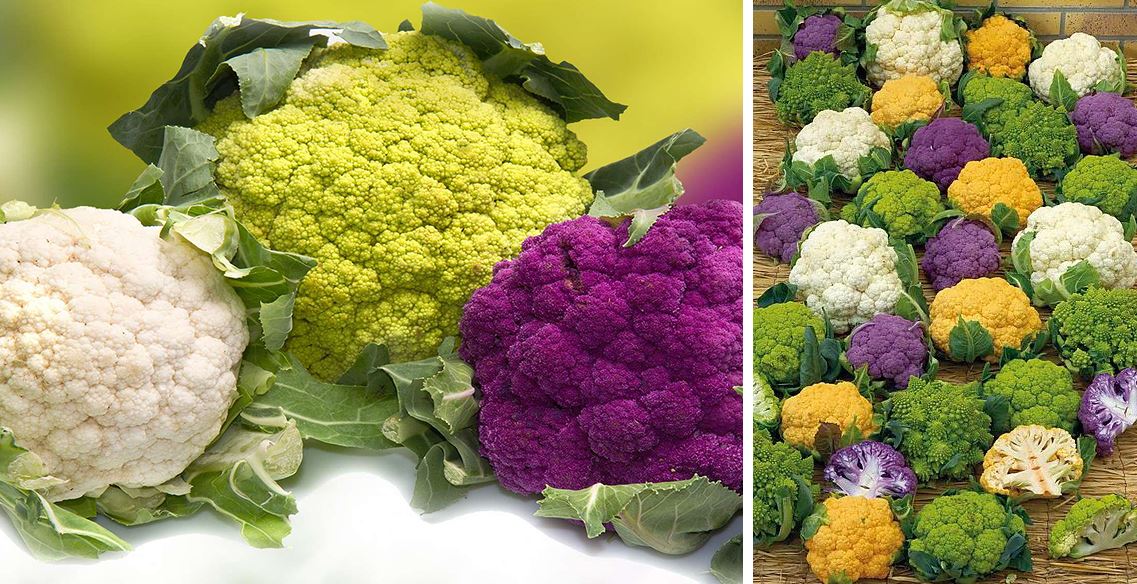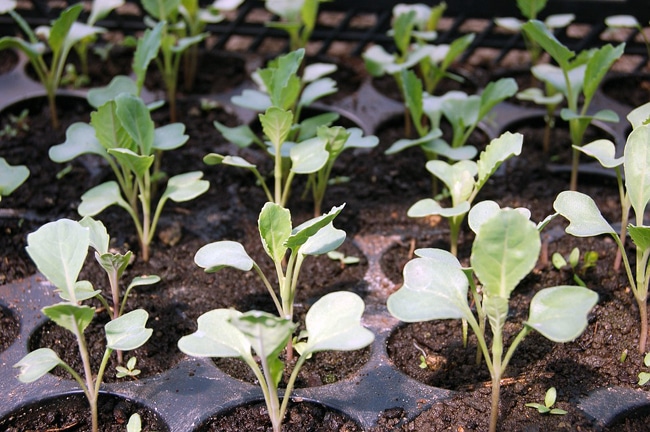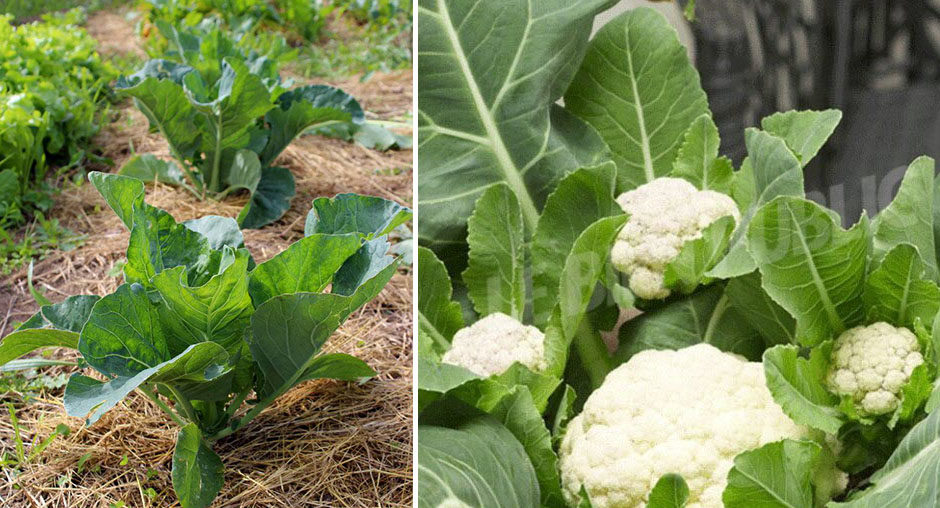When to sow cauliflower?
The summer varieties sow in February and March, in honeycomb plate, in terrine or in a sheltered pot heated to a temperature of at least 10 ° C: hot frame, mini greenhouse or greenhouse.
Of March to Maythe other varieties can be sown under veil, cold greenhouse or frame, under tunnel or in nursery.
The winter varieties sow between May and June in the ground, fresh and not acid, well enriched in advance or nursery thereafter.
Of April to Juneit's the varieties autumn and winter which are sown in nursery.
In late summer and early autumn are sown spring varieties which will remain in the ground during the winter.
Seedlings can begin as early as February provided that it is under heated cover and for the early varieties to be harvested in summer.
You have to adapt the sowing to the variety that you sow, some are more or less resistant to heat or cold. As a result, its vegetative cycle will be longer or shorter. The best is to respect the instructions given on the seed packets.
Seedlings are transplanted 6 weeks later after being thinned to 10 cm.
Which varieties to choose?

Colored, green, orange and purple apple cauliflowers come from natural mutation on old varieties. Orange cauliflowers are rich in carotene, provitamin A and violets in anthocyanins, usually turning white when cooked.
You will choose the varieties according to the date you want to harvest them. For a harvest in June-July, opt for the Nautilus or hybrid Siria F1they must be planted in January or February under hot tunnel. If you prefer harvesting between September and November, select a variety such as Wonder of all seasons which will be sown in May and June.
Summer and autumn cauliflowers:
- Sunset F1 : this light orange variety is vigorous with a round, compact apple. The harder you harvest it, the more intense the color. Its asset: it retains its color after cooking. It is harvested between 70 and 75 days after planting.
- The romanesco Natalino : it is in a pyramidal form with a medium apple and a light green color. It is an old early variety that is harvested between September and December. You will like its rather fine taste reminiscent of broccoli. It can be frozen easily.
- The wonder of any season : it is a traditional variety with white apple, voluminous and dense, with ample foliage and a medium size. It can be kept perfectly well after harvest, provided you leave some leaves at the base. It is a hardy variety, easy to grow and perfect for harvesting in summer and fall. It sows between January and June and is harvested from May to December.
- Vitaverde : its apple is compact and green, color that persists when cooked. It is very tasty and has a very fine grain. It is an easy to grow and versatile variety that is harvested in 105 days from July to November. It sows in the period of February to June.
Autumn and winter cauliflowers:
- The extra-hasty Angers : its apple is white, firm and voluminous with fine grain. It is early and cold-hardy, sows in May and June and is harvested in March.
- The Cartier F1: he has a dense and bulky apple. It is white and it is an easy variety, because vigorous. It sows between April and June and is harvested in the period between October and January.
Spring cauliflowers:
- The late Angers : it is a very old variety that has a very white apple, medium size, hard and very tight with long leaves. It is very early and it is mostly grown in the west and south of France because of its low resistance to cold. It is harvested between April and May, and is sown from mid-July to mid-September. It has a very fine grain and can be easily preserved without fading.
- The Armado : is a firm and generous apple cauliflower, its foliage is vigorous and perfectly covers the white apple. It is harvested during the months of April and May, and it is certainly one of the most frost resistant varieties.
What to do before sowing cauliflower?

Before sowing your cauliflower, you will have to prepare the soil: if you have anticipated your crop early enough, put a green manure, otherwise, prefer a decomposing organic manure: manure, compost …
The cauliflower needs potash to form properly: put a little wood ash (the equivalent of a large tin can, every 10 m².You will bring him more calcium.
Beware of fertilizers containing nitrogen, they tend to favor the development of leaves at the expense of the apple.
How to sow it?
Seedlings such as transplanting or planting work in the same way as headed cabbages.
- The seeds are deposited in loosened soil, 1 to 2 cm deep and they must be spaced 4 cm apart.
- Cover them with fine soil, tamp and sprinkle.
- You can transplant the seedlings in the nursery if you wish, just wait until they have 3 or 4 leaves. In this way, you favor the formation of roots, spaced 15 to 20 cm apart.
- Then, the establishment is done around the month of April when the plants have 6 or 7 leaves. It must then be spaced 80 cm in all directions.
- Plant only the most beautiful plants by bringing a good dose of already ripe compost at the foot of the plants. Throw the cabbage blind without a central bud.
- If you want to facilitate the recovery of the plants, you will praline the roots.
The main difficulty in potted seedlings, in honeycomb plates or terrine, is the dosage of moisture from the earth, it must be without excess to avoid the risk of rot and damping-off. We must also avoid the lack of light.
Each plant should be spaced at least 70 cm or 40 cm apart for dwarf varieties such as Angers half-hasty or Snowball.
Where to plant cauliflower?
Cauliflower appreciates rich and fresh soils. It can also be grown easily in humid and not too hot climates. On the other hand, they are demanding in terms of the nature of the soil. They enjoy themselves in the deep, humus, fresh and slightly clayey soil. It must have a pH between 7 and 8 quite high, but without excess. The soil must not be too rich in nitrogen.
They love the sun, but do not like excessive heat and drought. In warm areas, it is best to plant them in the shade. It likes mild winters, otherwise it should be protected with a thick mulch, dead leaves or a wintering veil.
How to maintain it?
The first obligation is to water regularly and perform weeding and hoeing during the season to avoid superficial crust.
You will also need to butter them several times during cultivation and bring the soil back to the foot so that they are firmly anchored and to help the roots grow.
You straw them as soon as temperatures are rising, being careful not to leave slugs underneath.
When the white apples have a diameter of about 10 cm, cover them with the inner leaves by tying them up or breaking them. This is not useful in the context of colorful apples. They will thus retain their whiteness.
Winter in the colder regions, you will need to mulch the feet and protect the apples with a veil.
As soon as the plants have 3 or 4 leaves, you can transplant them, but it must be done in May. You transplant them every 40 cm and in a well tilled ground.
How to water cauliflower?
Cauliflowers require good moisture hydration otherwise it may block the growth of the head. It is therefore necessary to water regularly, it is for this reason that autumn crops are simpler than those of summer.
In case of drought, do not forget to water regularly so that the soil is constantly wet. Be careful not to wet the foliage so as to avoid fungi. With good mulching, you can maintain moisture easily. And if you boil properly, it saves you from having to water too often.
Harvesting cauliflower: when and how?
You can harvest cauliflower for most of the year, depending only on when you planted it.
The time between sowing and harvesting is usually three months. It changes slightly depending on the climate.
If you harvest it in the winter, protect it from November.
Before harvesting, wait until the head is compact and firm. You cut it down to the ground. Early varieties are harvested at the end of summer, the others in spring, autumn and winter.
If you live in a cold region, you can pull the feet with the root ball and put them in frame, tunnel or greenhouse, and then replant them in the ground after the winter.
In very temperate regions, cauliflowers are harvested all year long, even if the autumn crops are the most prolific, as is the case in Brittany for example.
The diseases of cauliflower and what to do?
The most common disease for cauliflower is downy mildew and its development is mainly due to moisture. For to avoid this enemy, it is necessary to adopt the good gestures :
- Ventilate the foliage as much as possible by spacing the plants
- Avoid watering the foliage of your cauliflower
- Spray the soil with nettle manure at the beginning of the spring season
For fight against mildew, here are different techniques :
- It is best to pull the plants that are already infected
- With horsetail manure, you can spray the parts of the vegetation that are already affected
The mushrooms are also the enemies of cauliflower at the time of sowing. You may have doubts in the absence of emergence and in case the seedlings are destroyed: they wither and disappear. Do not sow too hard and it is important that the seedlings are at the right exposure and in a well-ventilated soil.
Cabbage hernia You notice it because the foliage wilts and the plant dies. You can avoid it by rotating crops over three years. Fresh fertilizers should not be used and the wood ash should be transplanted after the transplanting of the foot. We must tear up and burn the sick plants.
Black spots: they are due to alternaria spp. These are small black spots with a pale yellow halo.
Black rot It is a bacterial disease that produces V-shaped lesions at the edge of the leaves that eventually dry out and the affected veins turn black. Seeds that are not organically grown can be treated with water at 50 ° C for 25 minutes. You can rotate for three years.
White rust of cabbage it is manifested by white pustules, grouped on the leaves and in relief or white dust on the stems and foliage. From the onset, tear off and burn the affected plants.
Soft rot it occurs because of a bacterium. The stem rots and gives off a very bad smell. It is a disease due to the environment much too wet and poorly ventilated. Sowing must be done respecting the spacings between the plants and ensure a good fertilization without nitrogen. Dead leaves must be removed for the plants to take advantage of the sun. It is best to respect crop rotation.
On the harmful side, cauliflower is often subject to cabbage caries attacksthis caterpillar makes holes in the cauliflower. It is also particularly vulnerable to aphids and caterpillars. In this case, avoid chemical treatments that can contaminate your vegetables and soil. The snails and slugs enjoy young shoots, you can get rid of them by picking them up or by setting traps.
Even more plantations:








